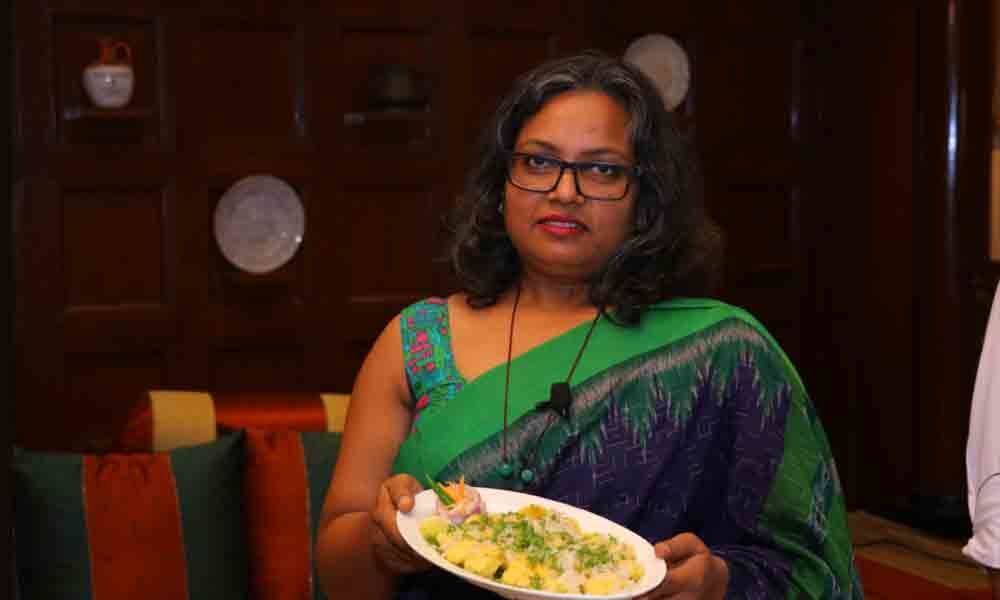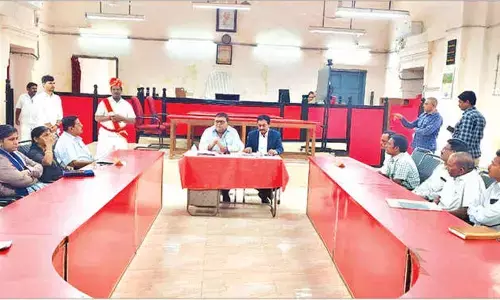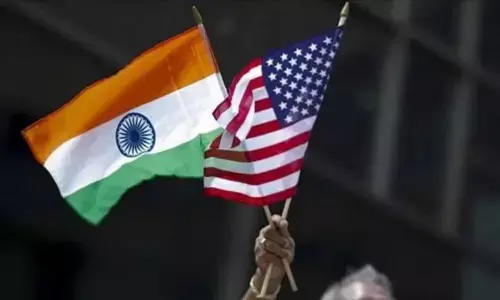Memories of happy times with pakodas
Sangeeta Khanna in her book, ‘Pakodas: A Snack for all seasons’ pays an ode to the one snack that the entire India relates to and relishes. She says, contrary to popular belief that fried Indian foods are bad for health, if cooked in the traditional method they can be nutritional…
A hammered brass paraat (a large and circular metal plate or dish, often used for kneading dough) with a beautiful patina acquired over the years, heaped with an assortment of crisp pakodas in a cast iron kadhai (a thick, circular and deep cooking pot) is my oldest memory of this most endearing Indian snack.
An assortment of vegetables cut into slices of varying thickness, others in long batons, some leaves prepped for a quick dip in the batter, a separate bowl of sliced onions sprinkled with dry besan (gram flour or chickpea flour) and seasonings, another with a thick yellow besan batter mixed with water—everything arranged neatly on the kitchen platform until a batter-smeared hand would pick out a coated vegetable, dip it into the batter and slide it into the hot oil. The magic would henceforth begin to unfold.
The excitement would begin just as the coated vegetable made contact with hot oil. The saundha (smoky-nutty-earthy fragrance of well-sautéed food) aroma of crisp pakodas and the hot and tangy fresh chutneys made by my paternal grandmother would have everyone making a beeline for the kitchen, filling their plates and perching themselves on the large jhoola (swing) in the verandah along with separate sheets of the day's newspaper. This was a typical weekend breakfast scene in my home. Yes, pakodas for breakfast was normal on weekends during my childhood.
Sometimes a few leftover chappatis or rotis would also be battered and fried and used as wraps for some crunchy pakoda. Strange as it may sound, a cold stale roti and a hot crisp pakoda in a roll, with a dash of green chutney, is still one of my favourite food combinations in the whole wide world. Something born out of the desire to waste less food is also a comforting feeling to return to, even after three to four decades since those leftover roti-and-pakoda breakfasts.
Years passed by and as if propelled by some latent emotion of finding solace in comfort foods, I ended up making mounds of pakodas and pakodis when I was initiated into the kitchen in my in-laws' home after my marriage. I recall my husband helping me with the peeling and chopping of vegetables, making chutneys and so on, while dozens of his cousins, aunts and uncles enjoyed the pakodas in the big courtyard on cold winter afternoons with adrakwali chai (tea laced with ginger). His aunts would constantly tease me how the new husband was so helpful, and the cousins would saunter in and out of the kitchen to compliment me. Many more pakoda parties followed once we set up our own kitchen, grew vegetables in the garden and found new friends in the places we lived thereafter.
There are some traditional Indian foods that are still associated with happy times in both big and small families. Chai and pakodas top that list for sure! The informal manner in which pakodas are passed around amongst both the elders and youngsters, the urgency to grab more and the clamour that follows when hot pakodas are fried is something every family can relate to. And yet, these deep-fried snacks are slowly becoming a rare sight in many families. We have somehow forgotten how many of us felt fit and energetic even when we ate platefuls of pakodas at home once every fortnight; blame it on the new wave of confusing health dictums that mandates fat-free foods or low-fat foods and cruelly excludes the good old pakoda.
There was a time when all sorts of pakode, pakodiyan, fulouri, vade (all variations of the pakoda) were routinely made in families for generations. Even today, one can see at least three generations sitting together to enjoy these delectable home-made treats. The grandmother who was witness to the best of fresh produce slow cooked during her lifetime, and the grandchild whose table is stacked with cartons and packets of processed foods, both meet at a point where a kadhai full of hot pakodas sizzle away. The more people consume the packaged junk, the more they seem to vilify the traditional deep-fried delicacy for some strange reason. It is quite possible that there is a conspiracy against Indian food and particularly the pakoda—that of misrepresentation.























